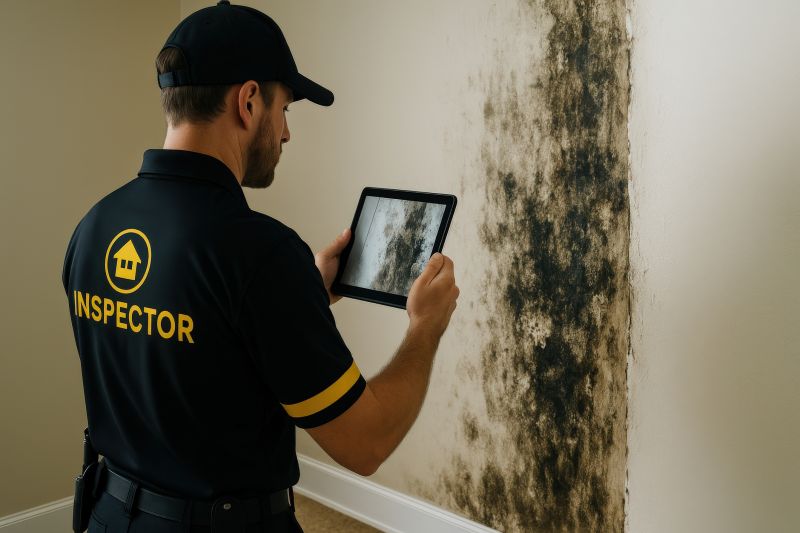Leading Mold Inspection And Testing Devices For Homeowners
Equip yourself with effective tools for detecting mold and safeguarding your family’s health with confidence.
 Mold inspection and testing products are essential tools for identifying and assessing potential mold issues within indoor environments. These products range from simple home test kits to advanced electronic detection devices, providing options suitable for both DIY enthusiasts and professionals. Proper mold detection is crucial for maintaining healthy indoor air quality and preventing potential health concerns associated with mold exposure.
Mold inspection and testing products are essential tools for identifying and assessing potential mold issues within indoor environments. These products range from simple home test kits to advanced electronic detection devices, providing options suitable for both DIY enthusiasts and professionals. Proper mold detection is crucial for maintaining healthy indoor air quality and preventing potential health concerns associated with mold exposure.
Top Overall Option
Multi-Function Mold Test Kit
A versatile mold testing kit that combines surface sampling, air testing, and rapid on-site results. It includes detailed instructions, sampling tools, and a simple analysis process suitable for both homeowners and professionals seeking comprehensive initial assessments.
Types of Products For Mold Inspection And Testings
Surface Swab Test Kits
Designed for collecting samples from visible mold or suspect surfaces for laboratory analysis.
Petri Dish Mold Test Kits
Allow for direct sampling of mold spores on surfaces with incubation for visual identification.
Air Sample Test Kits
Capture airborne mold spores for laboratory testing, providing insight into indoor air quality.
Electronic Mold Detectors
Portable devices that detect mold presence through humidity and spore concentration levels in real-time.
Moisture Meters
Measure moisture levels in building materials to identify potential mold growth areas.
Infrared Thermometers
Detect temperature variations that may indicate hidden moisture problems conducive to mold growth.
HVAC Mold Testing Devices
Specialized tools for testing air ducts and HVAC systems for mold contamination.
Laboratory Analysis Services
Send collected samples to certified labs for detailed mold species identification and spore counts.
Reusable Sampling Devices
Eco-friendly tools designed for multiple uses in ongoing mold monitoring efforts.
UV Light Inspection Tools
Use ultraviolet illumination to identify mold colonies that fluoresce under UV light.
Popular Choices
Affordable and easy-to-use kits for initial mold screening in residential spaces.
Real-time devices that measure airborne mold spores and humidity levels for ongoing monitoring.
Convenient tools for collecting surface samples to detect mold presence.
Comprehensive kits that include sample collection and lab analysis options.
Popular for identifying moisture-prone areas that could support mold growth.
Handheld devices for quick detection of mold spores in the air or on surfaces.
Widely used for detecting hidden moisture behind walls and ceilings.
Popular for testing air ducts and HVAC systems for mold contamination.
Used for visual inspection of mold colonies fluorescing under UV light.
Eco-friendly options for ongoing mold monitoring over time.
Homeowners and property managers often start with basic testing kits that allow for quick sampling of air or surface areas suspected of mold growth. These kits typically include swabs, petri dishes, and instructions for collecting samples, which can then be sent to laboratories for analysis. For those seeking immediate results, handheld electronic devices such as moisture meters and mold detectors can help identify areas with elevated humidity or mold spores in the air.
Professional-grade testing equipment offers more detailed insights, including air sampling pumps and laboratory-grade air quality analyzers. These tools can measure mold spore concentrations and identify specific mold types, providing comprehensive data to inform remediation strategies. Whether for routine inspections or in-depth investigations, selecting the right products depends on the scope of the inspection and the level of detail needed.
Understanding the different testing methods and tools available can help users choose the most appropriate products for their specific needs. From simple home testing kits to sophisticated electronic detectors, there are options designed to fit various budgets and expertise levels. Proper use and interpretation of these tools are essential for accurate assessment and effective mold management.
Key Buying Considerations
- Determine whether you need a simple DIY testing kit or professional-grade equipment for detailed analysis.
- Consider the type of sample collection method that best suits your needs, such as surface swabs, petri dishes, or air sampling devices.
- Evaluate the ease of use and clarity of instructions provided with the testing products.
- Check if the product includes or requires laboratory analysis for accurate identification of mold species.
- Assess the portability and size of electronic detectors for ease of use in different areas.
- Review the detection range and sensitivity of electronic mold detectors to ensure they meet your requirements.
- Look for products with clear instructions on sample collection, handling, and interpretation of results.
- Consider the frequency of testing needed, especially for ongoing monitoring or post-remediation verification.
- Examine the compatibility of testing tools with other moisture detection or air quality assessment devices.
- Research the reputation and reviews of the product to ensure reliability and accuracy.
- Determine your budget and compare features to find options that offer good value for your needs.
- Verify if the product includes necessary accessories such as swabs, containers, or calibration tools.
- Consider whether the product provides rapid results or requires laboratory processing, based on urgency.
- Ensure the testing products are suitable for the environment you are inspecting, such as residential, commercial, or industrial spaces.
- Be aware of any safety precautions or certifications associated with the testing equipment.
This content contains affiliate links. We may earn a commission if you make a purchase through these links, at no additional cost to you.
